Stars that Wore their own jewelry on the Red Carpet
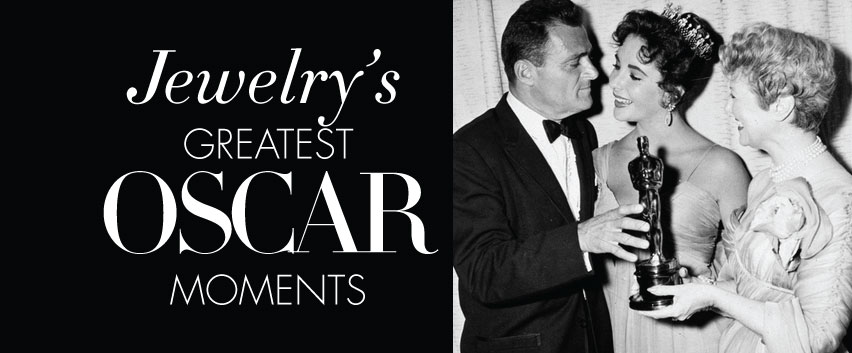
 This Article is the first in our coverage of the defining moments in jewelry at the Academy Awards. We will be featuring stories throughout the week including the shining stars on the red carpet at the 2017 Oscars.
This Article is the first in our coverage of the defining moments in jewelry at the Academy Awards. We will be featuring stories throughout the week including the shining stars on the red carpet at the 2017 Oscars.
There was a time in Hollywood when stars that could be considered “brand ambassadors” actually owned the jewelry they wore in films, publicity shots, and to attend the Academy Award ceremonies. But before the awards were televised in 1953, these actresses made headlines and became associated with certain houses through the ongoing relationships they built and the pieces that were commissioned for and by them. Just think about Elizabeth Taylor during shooting Cleopatra in Rome, when Richard Burton quipped to the press, “The only Italian Elizabeth knows is Bulgari.”
Or remember Marlene Dietrich as Charlotte in Hitchcock’s Stage Fright wearing her Van Cleef & Arpels ruby and diamond Jarretière bracelet. The press and films helped to make style icons out of the actresses and those who chose to wear their own jewelry offered a peek into the famed houses and set the trends of the day. In addition to Elizabeth Taylor and Marlene Dietrich, actresses such as Mary Pickford, Gloria Swanson, Joan Crawford, Merle Oberon, Paulette Goddard and Grace Kelly, to name just a few — all wore their own jewels in the films in which they starred. Throughout Hollywood’s Golden Age, these stars were regarded as American royalty, so when the press reported they were wearing their own precious gems, it gave these jewels an even greater allure, with women wanting to emulate their favorite actresses of the day.
Stars of the silver screen also loved showing off their pieces in public – these pieces were part of their real-life moments, not just the few hours they spent on the red carpet and at the Academy Awards ceremonies. And, unlike that the jewels making headlines today and influencing the styles we want to own, these pieces were purchased rather than borrowed and there were no placement deals or expensive contracts determining what would inspire the next trend or build a certain brand’s name.
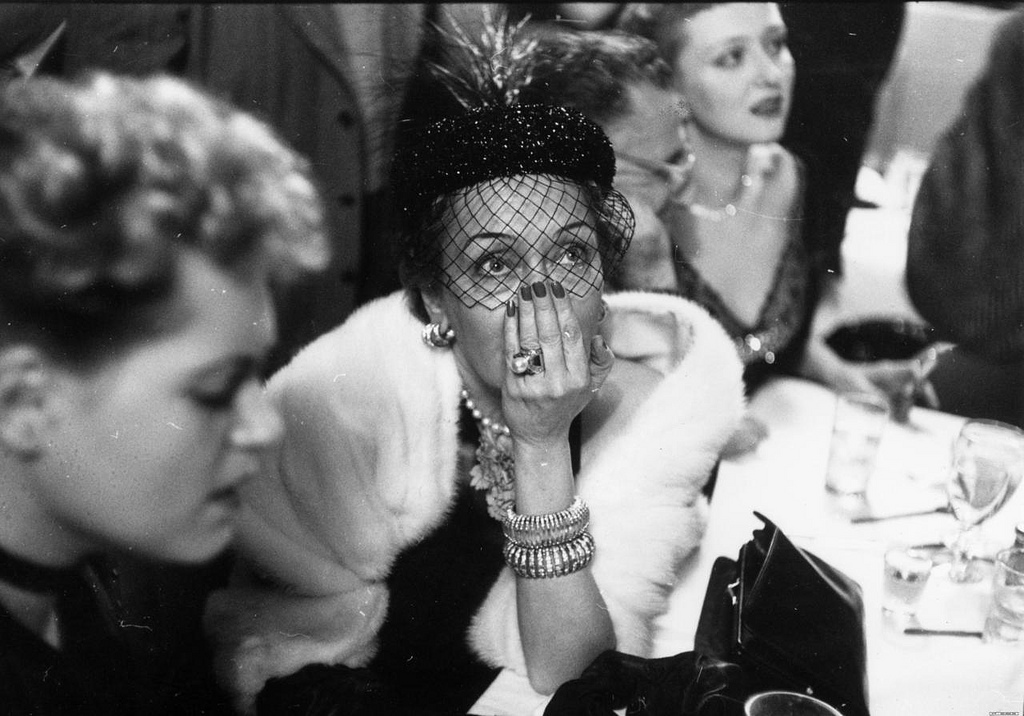
In many cases it was quite the contrary — Gloria Swanson’s studio contract with Famous Players, Lasky stated that she had to appear publicly, dressed in the latest fashion and jewelry. Magazines at the time reported her spending a fortune on her wardrobe. To fully accessorize an outfit, she would have to rent some of her jewelry at ten percent of the cost — in one year she ran up a rental cost of $500,000. But she owned her Cartier rock crystal and diamond bracelets and wore one on each wrist in her role as Norma Desmond, the aging silent film star actress — the wide art deco bracelets were burned into the memories of any woman who has ever seen Sunset Boulevard or even photos from the film. It is interesting to note that Swanson, nominated for Best Actress for the movie in 1951, was wearing these same bracelets while waiting for the radio broadcast to be announced. (It was two years before the Academy Awards were first televised.) The press took shots of her waiting for the results at a party, sitting with Judy Holiday and Jose Ferrer, who both wound up receiving Oscars, while Swanson unfortunately did not, and sadly it was also her birthday when she found out. Yet we still remember her remarkable performance and the Cartier bracelets live on in books, exhibits and our collective consciousness.
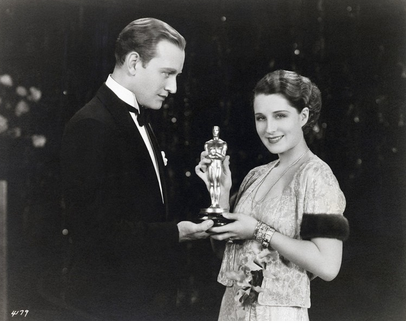
Norma Shearer at the Academy Awards, 1930. PHOTO: Rex/Shutterstock
Norma Shearer was another actress who wore her engagement ring from producer Irving Thalberg in the film The Divorcee, and again to receive her Best Actress award for the same movie in 1930, the first year of the Academy Awards ceremony and the first radio broadcast of the awards. She was also wearing a stack of her own bracelets to the ceremony, which were captured in photos the press published. Universal producer Irving Thalberg was Shearer’s boss at the time, and their first date consisted of going to the premiere of Charlie Chaplin’s silent comedy The Gold Rush in 1925. Two years later, Thalberg called her into his office and was sitting across from her when he pulled out a box from his desk drawer. It was a selection box that contained something much more alluring than chocolates—in it was a range of engagement rings from which she could choose her favorite. She selected a fashionable slender platinum band, set with a large marquise-cut diamond, which influenced women’s choices in engagement rings after seeing her in the film.
Fast forward to the mid-‘50s after The Academy Awards started being televised. And like the earlier pieces, these jewels were not chosen by and borrowed from stylists, nor were deals made nor large sums paid to wear the gems, rather they were owned by some of the biggest stars in Hollywood and were worn to accept and present the Oscars.
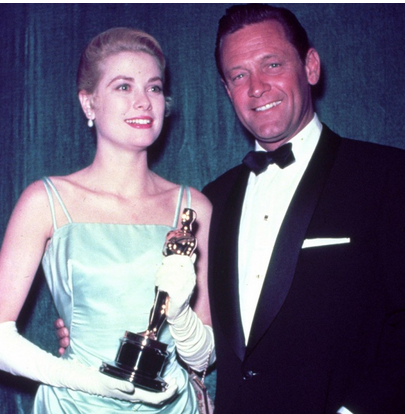
Grace Kelly in 1955 with William Holden, holding her Best Actress Oscar. PHOTO: Rex/Shutterstock
Grace Kelly received the award in 1955 for her performance in Country Girl. Ever poised and elegant, she wore a shimmery blue gown by Edith Head and not unsurprising, simple pearl earrings. Kelly became a poster girl for pearls in the 1950s, explaining, “I favor pearls on screen and in my private life.” Kelly was known for her natural elegance, and pearls reflected Kelly’s own luminescence. Playing opposite James Stewart in the Hitchcock film Rear Window (1954), her jewelry consists mainly of pearls. In the official engagement photo of Kelly and Prince Rainier III, she wore a two-strand pearl choker. On her wedding day, she selected simple pearl and diamond earrings to complement her intricate lace gown. As a wedding gift, Rainier commissioned a parure of pearls from Van Cleef & Arpels.
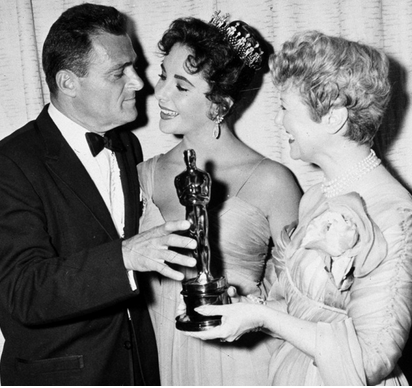
Elizabeth Taylor with Mike Todd in 1956. PHOTO: Rex/Shutterstock
In 1957, Elizabeth Taylor accompanied her third husband, film and theater producer Mike Todd to Academy Awards, where Todd won the award for Best Picture for Around The World in 80 Days. She looked radiant in the diamond tiara Todd had bought for her. Upon giving her the gift, he said, “You’re my queen and I think you should have a tiara.”
Taylor’s romances paralleled her passions for jewelry. After Taylor met and married Richard Burton, he gave her some of the most famous and beautiful jewels in the world. In 1967, she wore part of her Bulgari suite of emerald and diamond necklace and earrings to accept her Best Actress Award for Who’s Afraid of Virginia Woolf.
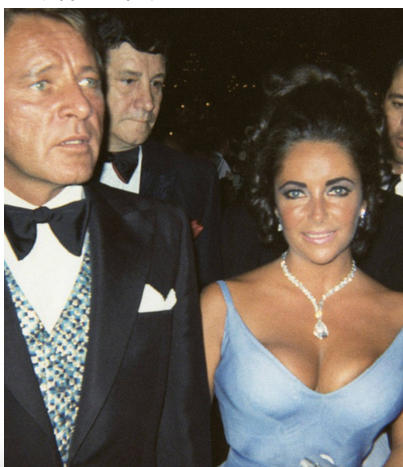
Elizabeth Taylor with Richard Burton in 1970. PHOTO: Rex/Shutterstock
After purchasing Taylor the Taj Mahal and Krupp diamonds, he bid at auction on the 69.42-carat pear shaped diamond ring. He lost the ring to Cartier, for $50,000 more than the limit of $1 million that Burton had given to his representative. Refusing to take no for an answer, he negotiated with Cartier and bought the ring from them for $1.1 million, with the agreement to allow Cartier to display the stone for a limited period in their Chicago and New York stores. The pear-shape ring was renamed “The Taylor-Burton Diamond.” Taylor originally wore the diamond as a ring. She found it too huge, and decided to have Cartier design a necklace around it. She first wore it to Princess Grace’s 40th birthday in Monte Carlo and then to present the Best Picture at the 1970 Academy Awards. To showcase the pear-shaped diamond necklace as well as her eyes, Taylor wore a custom violet chiffon dress with a plunging neckline, designed by Edith Head.
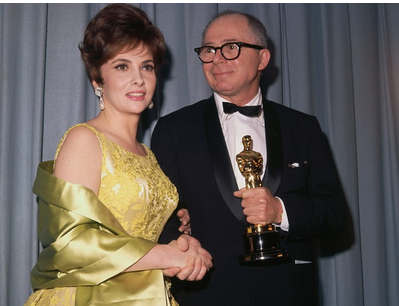
Gina Lollobrigida and Billy Wilder in 1961. PHOTO: Rex?Shutterstock
Gina Lollobrigida was known for purchasing her own jewelry. The actress-turned-artist and sculptress is quoted as saying: “Jewels are meant to give pleasure and for many years I had enormous pleasure wearing mine … I love the stones — the pearls and emeralds — because they are natural, the raw products of nature. Then there is the skill of the artist involved, the craftsmanship of turning these beautiful stones into works of art.”
She was a regular at the house of Bulgari and wore her Bulgari pearl and diamond earrings to present the award to Billy Wilder for Best Direction in 1961.
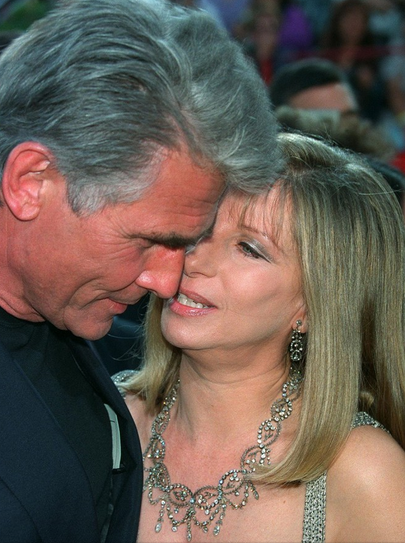
Barbra Streisand and James Brolin 1997. PHOTO: REX/Shutterstock
Early on in her career, Barbra Streisand knew the transformative powers of an antique brooch, even if it was faux—rhinestone or crystal-set stones. After landing the major role of her career and winning the Oscar for her performance as Fanny Brice in Funny Girl, she could afford real jewelry, but her thrill of the hunt stayed with her and she shopped for fine antique pieces. Throughout the last two decades of her career, Streisand has appeared at red carpet events wearing her own antique jewelry. At the 1997 Academy Awards, she was photographed with her husband James Brolin wearing the Faberge necklaces she purchased from Wartski in 1994.
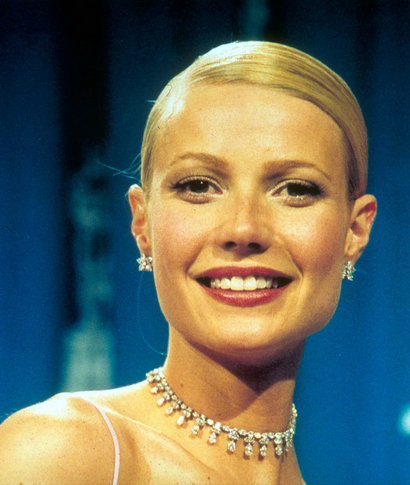
Gwyneth Paltrow in 1998 with the Oscar for Best Actress. PHOTO: REX/Shutterstock
It was Harry Winston who first started loaning jewelry to wear at the Academy Awards in 1944 when they dressed Jennifer Jones in a diamond necklace. Since the ceremonies were not yet televised, Winston saw three ways to benefit: first, the press would print photos of the actress wearing the piece, creating public appeal; second, other actresses at the event would see the star in the jewelry and want a similar piece for themselves; and third, the star who wore the loaned jewelry might eventually want to purchase it. In 1998, 54 years later, when Gwyneth Paltrow channeled Grace Kelly in her elegantly feminine pink Ralph Lauren dress and wore the 40-carat Harry Winston diamond necklace when receiving the Best Actress award for Shakespeare in Love, Harry Winston’s original plan worked. Paltrow’s father bought her the necklace to celebrate her win and the jeweler sold several more the following week.
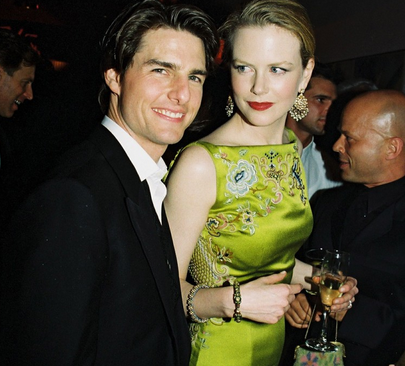
Nicole Kidman, photo: Rex Shutterstock
Looking towards the 89th Academy Awards this coming weekend, I suspect that we won’t see many jewels owned by those walking the red carpet, although it would be a refreshing change and throwback to the Golden Age.
Yet, whatever the A-list actresses wear — whether contracted, borrowed or styled in — will have an influence on jewelry’s future. Just look at Nicole Kidman’s entire ensemble from 1997. She not only brought back Old Hollywood glamour but also created multiple trends with the chartreuse embroidered John Galliano for Christian Dior dress, which was impeccably accented by Mogul Indian jewelry from Martin Katz for cross-cultural fashion, bohemian couture and yellow gold after a decade of white metal.
Parts of this story first appeared in my article for Indesign.jewelry in Feb 2016

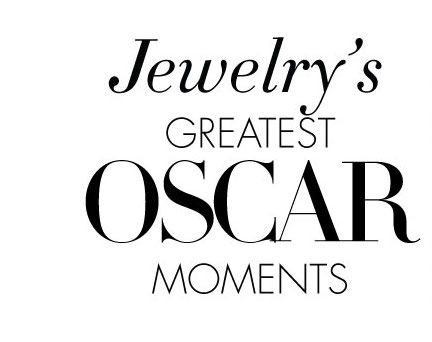 This Article is the first in our coverage of the defining moments in jewelry at the Academy Awards. We will be featuring stories throughout the week including the shining stars on the red carpet at the 2017 Oscars.
This Article is the first in our coverage of the defining moments in jewelry at the Academy Awards. We will be featuring stories throughout the week including the shining stars on the red carpet at the 2017 Oscars.


